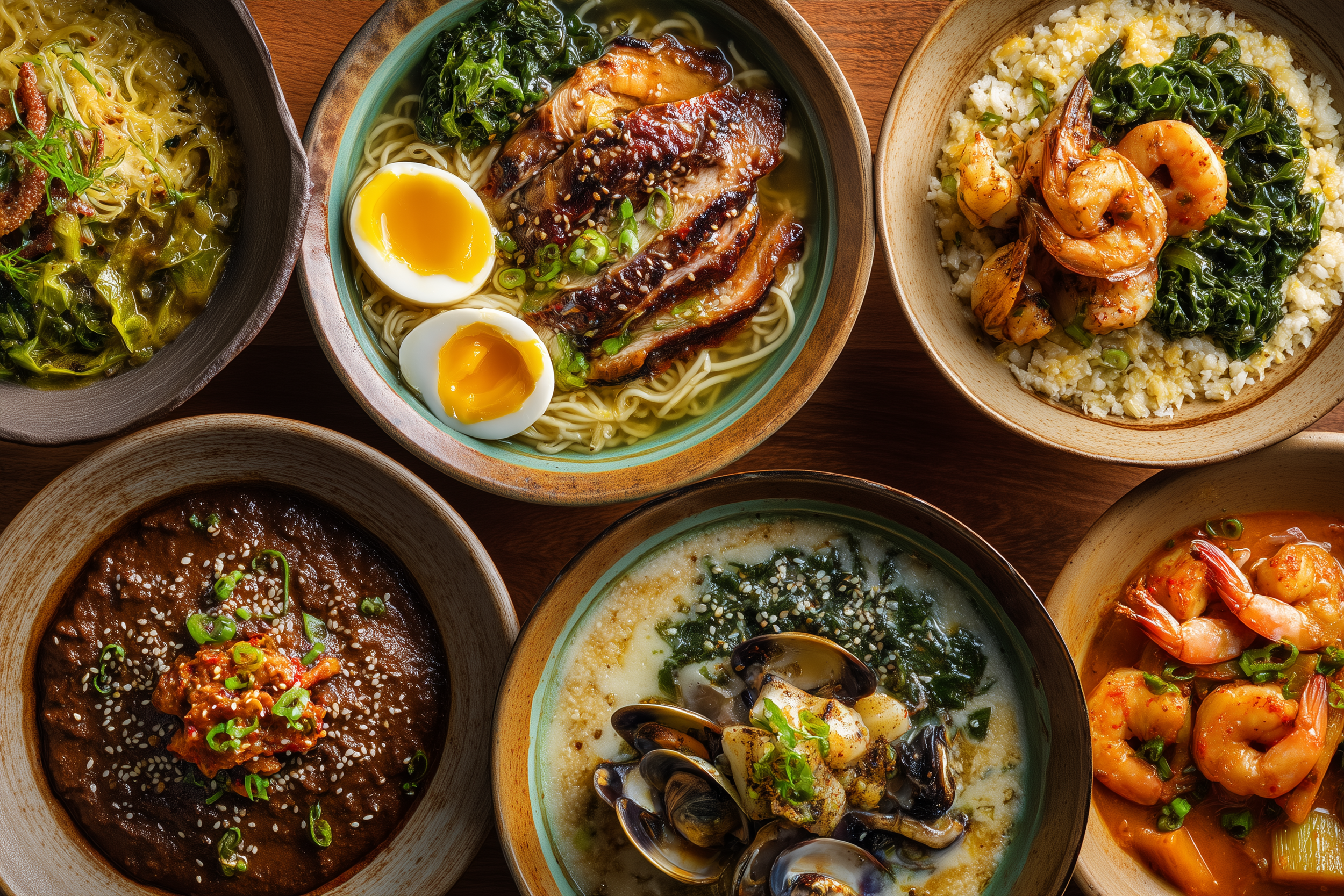WTF Is Umami?
“Umami isn’t one thing — it’s a compound chorus. Here’s what each family brings to the table.”
And Why You’re Probably Underrating It
Japan didn’t just name umami — they perfected how to use it.
While some cuisines build umami through long reductions and heavy layering, the Japanese approach is about clarity, balance, and restraint. Umami in Japanese cooking doesn’t overpower. It supports. It’s part of the washoku philosophy — where harmony between taste, texture, and seasonality guides every dish.
Technically, umami is the taste of glutamate and certain nucleotides (inosinate, guanylate) — naturally occurring compounds that your tongue is wired to crave. It’s the savory roundness found in aged cheese, slow-roasted meats, fermented pastes, and anything that’s been cooked long enough to break down into complexity.
Back in 1908, Japanese chemist Kikunae Ikeda asked a simple question: Why does dashi taste so good? The answer? Kombu (dried sea kelp), loaded with glutamates. And just like that, the fifth taste had a name: umami.
But here’s the kicker: humans had been chasing umami for centuries before the science caught up. If you’ve ever stirred a stew for hours or saved the last spoonful of sauce for your rice, you’ve been chasing it, too.
A quick taste map of umami-rich ingredients — from aged cheese to anchovies. These are the building blocks of deep flavor.
Umami Is Japanese — and Everywhere
Japan named it and nailed the science.
But every culture’s been building umami their own way, long before glutamates got a shoutout.
Japan: Dashi from kombu and katsuobushi, miso aged like wine, soy sauce brewed to perfection
Mexico: Toasted chiles, mole thick with seeds and fruit, jammy tomatoes
Italy: Parmigiano that crumbles, anchovies melted into sauce, pancetta rendered low and slow
West Africa: Fermented locust beans, smoked fish in red palm oil, long-simmered peanut stew
Caribbean: Bouillon cubes in everything, sofrito seared deep, cured meats stretching flavor
Korea: Doenjang, gochujang, anchovy-kelp broth that hits deep
China: Soy sauce, oyster sauce, preserved black beans, dried scallops
France: Demi-glace like silk, browned butter, mushroom duxelles hidden in pastry
It’s not about copying any one playbook — it’s about seeing how cultures build flavor from the ground up, with what they’ve got, until it’s unforgettable.
Mole,Ramen,shrimp and mussels,
Power Moves: Six Umami Bombs I Swear By
These aren’t just ingredients — they’re flavor amps. One deepens. Two or more? Now you’re building real flavor architecture.
🥫Tomato Paste (toasted)
Raw paste is just a start. Cook it in fat until it darkens and sticks — Maillard magic. Deglaze it, and you’ve got umami on umami.
🐟 Anchovy Paste
Secret weapon. High in inosinate, it melts into sauces and sautés without tasting fishy — just deep.
🧄Black Garlic
Garlic, fermented until it’s sweet, sticky, and molasses-dark. Deep funk, no bite. Stir into ramen, butter, or smear on toast.
🍄 Dried Mushrooms (shiitake, porcini, morel)
Umami gold. Drying concentrates flavor. Rehydrate for broth, blitz into powder for a rub. Rich, earthy, real.
🔥 Gochujang
Fermented chili paste with sweet heat and savory punch. Mix into mayo, glaze meats, or start a soup base.
🫛 Long-Simmered Legumes
Beans, lentils, red peas — cooked down with aromatics and time. Starch breaks down, protein softens, and the broth starts to sing.
Everyday Umami: Hiding in Your Fridge
No chef coat needed — these are quiet MVPs already in your kitchen:
Mushrooms – Roast or sauté until golden for peak umami.
Aged Cheese – Parmesan, cheddar, blue — sharper = stronger umami.
Tomatoes – Especially canned, paste, or sun-dried. Roast them, reduce them.
Soy Sauce & Tamari – Splash into soup, dressings, or scrambled eggs.
Cured Meats – Bacon, prosciutto, jamón. Salt + time = treasure.
Egg Yolks – Slow-cooked or cured — dense, rich, savory.
Seaweed – Nori, kombu, furikake — a sprinkle goes far.
Browned Butter – Heat until the milk solids caramelize. That’s toasted, nutty umami.
Nutritional Yeast – Like vegan parmesan dust. Popcorn, pasta, whatever needs a hit.
Umami Pairings: Think Like a DJ
Umami doesn’t solo. It blends. Mix it right, and you hit harder.
Umami + Acid = Sharp Meets Savory
Miso + citrus, tomatoes + vinegar, soy sauce cutting through fat. Acid lifts umami and keeps it bright.
Umami + Fat = Rich and Lingering
Anchovy in olive oil, gochujang in mayo, parmesan in béchamel. Fat carries flavor and makes it last.
Umami + Sweet = High-Contrast Heat
Black garlic + maple glaze, chili crisp + honey, miso + mirin. Sweet sharpens the edge.
These combos give you more than taste — they build texture, contrast, and craveability. That’s flavor design
Final Take: Umami Is the Bassline
Salt sharpens. Acid brightens. Heat thrills.
But umami? It’s the bassline. It grounds your food. Gives it memory.
Want to cook like a chef? Start with umami. Layer it. Balance it. Respect it.
Because once you know how to build with it, even your fridge-cleanout meals start tasting like they belong in a book.



